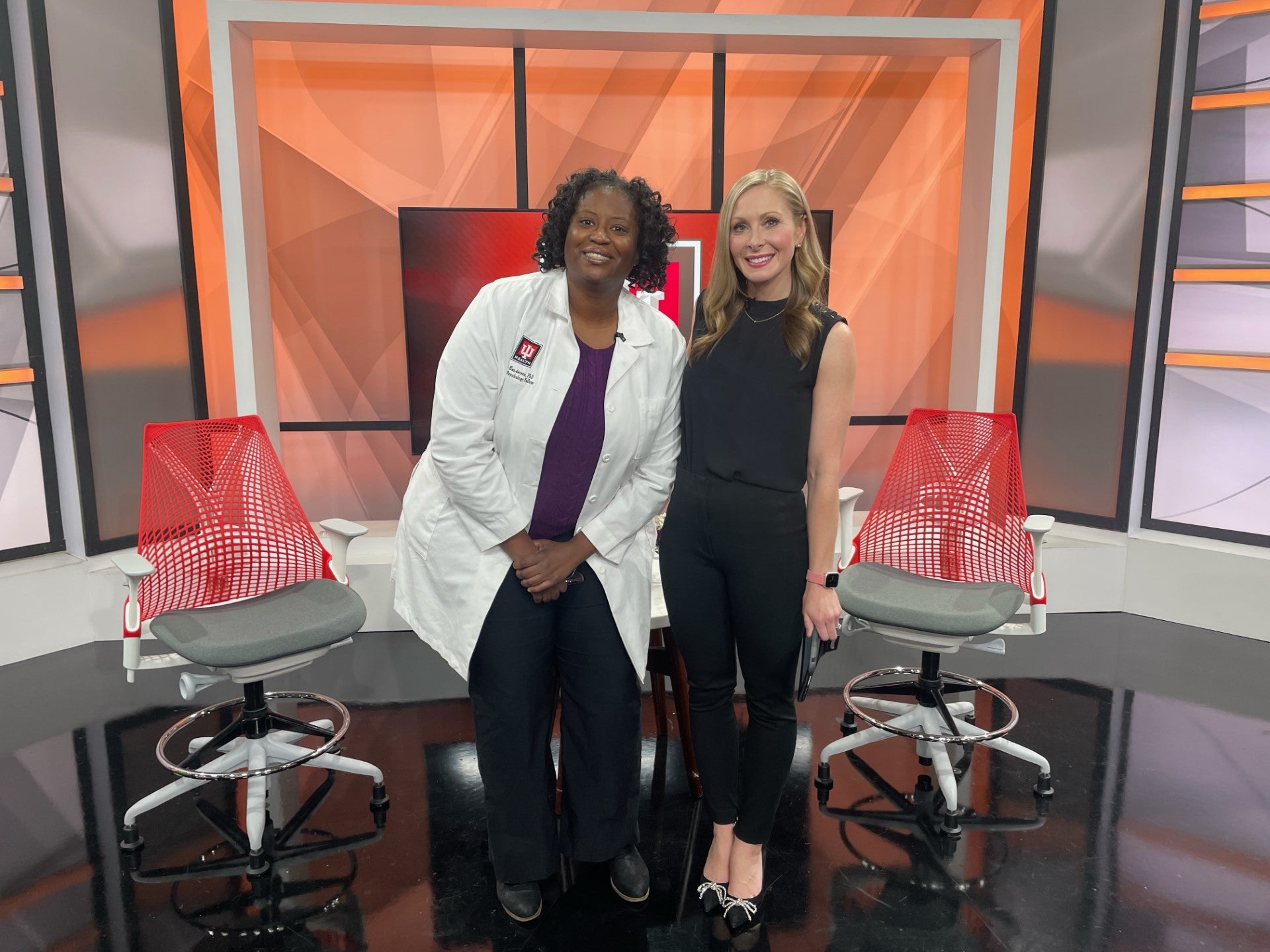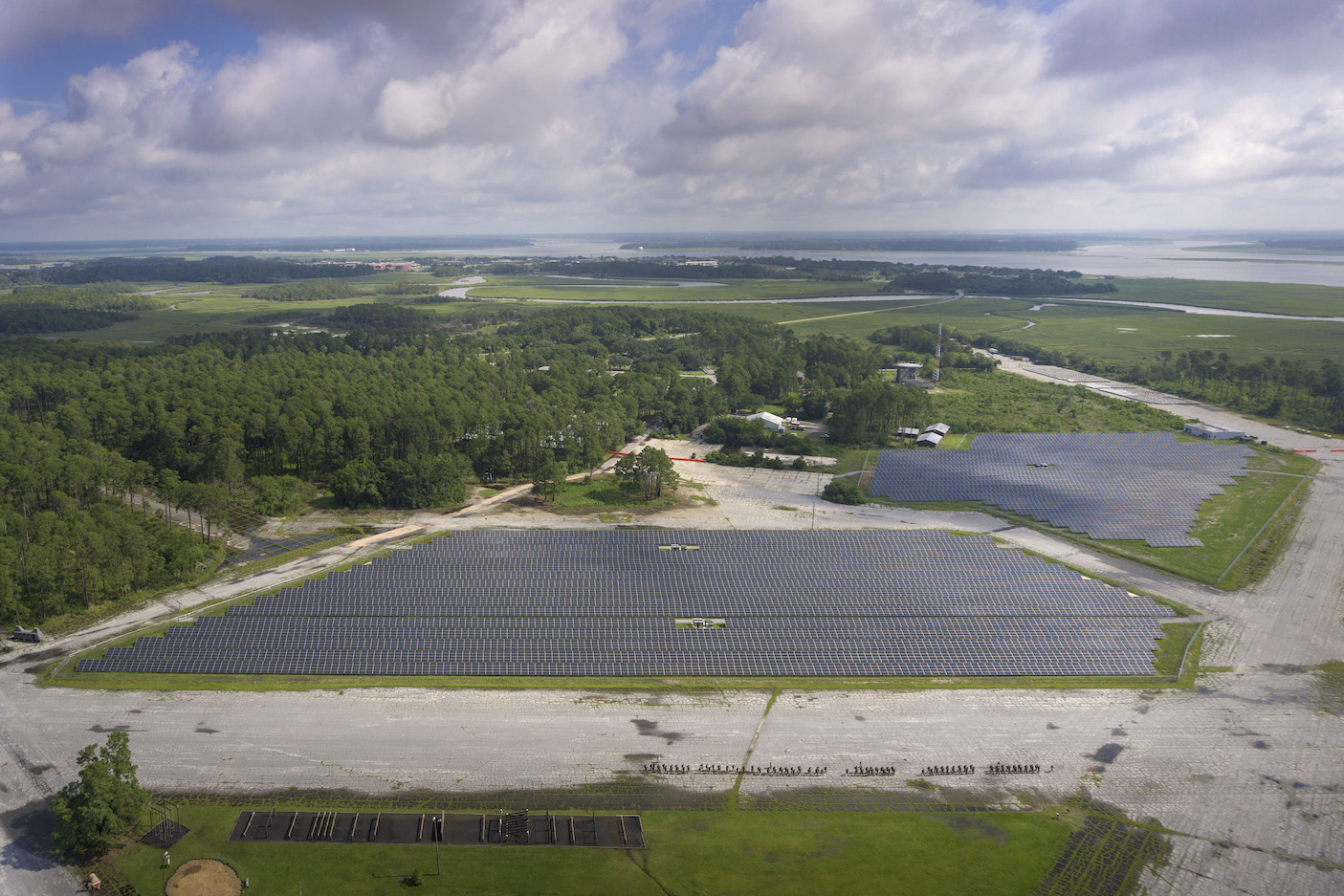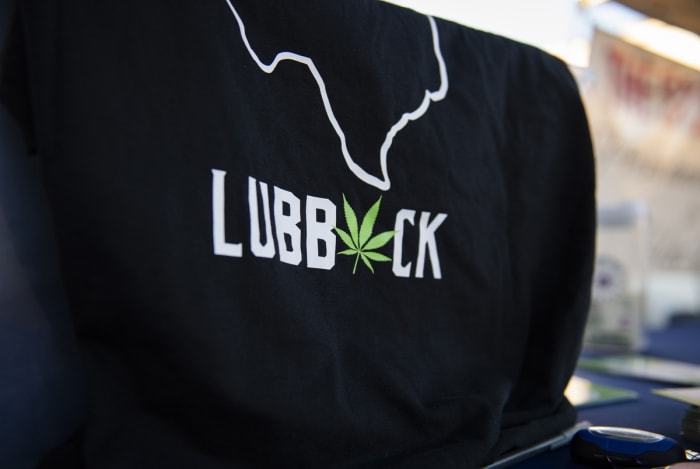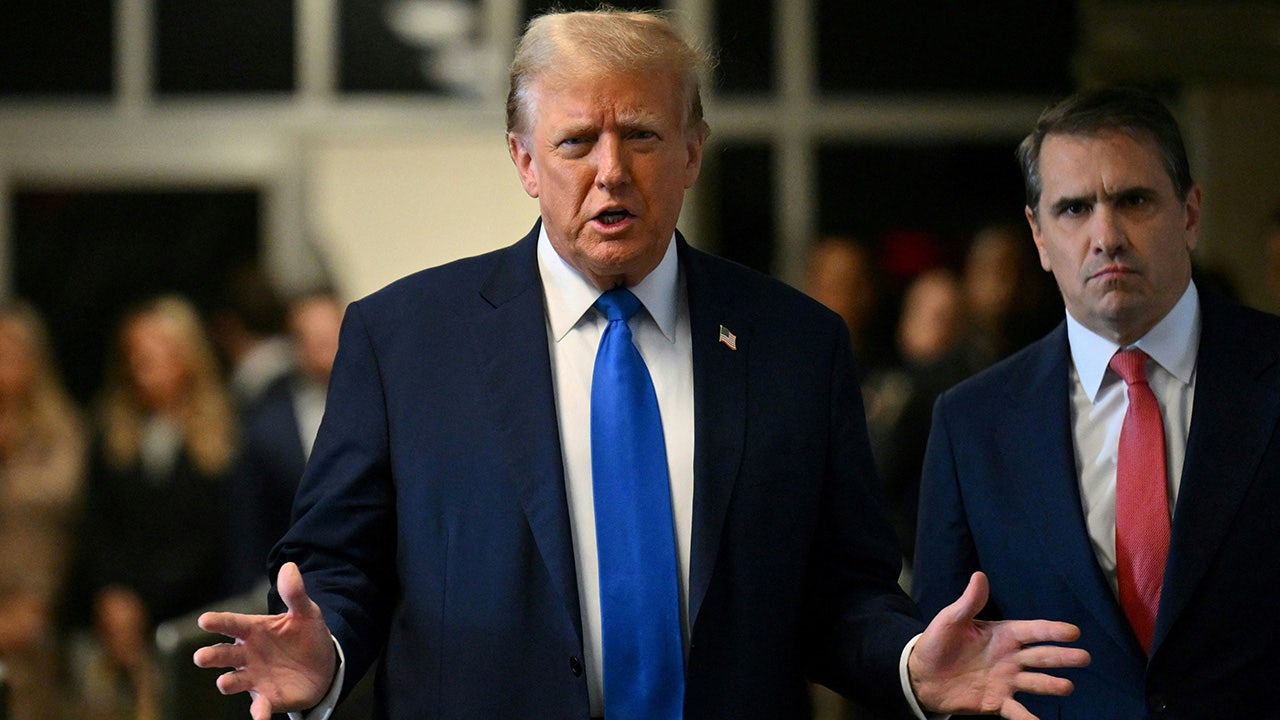Indiana
Ways for moms to prioritize mental health

INDIANAPOLIS (WISH) — According to the National Institutes of Health, one in seven women will struggle with postpartum depression, or PPD.
Symptoms of PPD can occur anywhere from two to six weeks following delivery, which could leave moms feeling down, lethargic, unable to focus, and more.
Danielle Henderson, who has a doctorate in clinical psychology and is an assistant professor of clinical psychiatry at Indiana University School of Medicine, joins News 8 to share tactics on how new mothers can prioritize their mental health in the weeks after delivery.

Indiana
Colwell: Tuesday’s primary could draw national attention, but nothing like 2016.

Indiana’s presidential primary could draw some national attention, even though the results Tuesday will mean nothing in terms of selecting the nominees.
There certainly won’t be national news of the magnitude of eight years ago, when Donald Trump ended the last chance of the “Stop Trump” movement, solidly defeating Ted Cruz and winning all 57 delegates at stake in the state’s Republican primary.
Now, there will only be a look at percentages in the Republican primary and analysis of what, if anything, it means for November if Nikki Haley gets a significant protest vote.
While both Trump and President Joe Biden long ago won more than enough delegates for nomination, their names will be on the Indiana ballot Tuesday — Biden unopposed in the Democratic primary; Trump listed along with Haley, who quit campaigning two months ago, on the Republican side.
Haley qualified for the Indiana ballot before she was clobbered by Trump in the March 5 Super Tuesday primaries and suspended her campaign.
More Colwell: The choice is clear, even if it’s not an ideal one.
Since Haley is out of the running, votes for her in Republican primaries are seen now as indication of unhappiness with Trump and a sign of possible defections from him in the fall.
The recent Pennsylvania Republican primary results were regarded as troubling news for Trump, with 155,000 voters —16.5% of the GOP turnout — declining to vote for their presumptive nominee and instead picking Haley.
It seems unlikely that Haley will get a percentage that high in Indiana, where Trump has been so popular with Hoosier Republicans in his two presidential races.
Even if she did, it wouldn’t mean as much as that showing in Pennsylvania, a key state in determining the winner in the Electoral College. Republican defections there could be decisive. Indiana, however, is listed in all projections as in the Trump column for sure in the fall.
Signs of defections here would be viewed not in terms of suggesting some monumental upset in the fall in Indiana, but as an indication that Trump’s base might not be as solid nationally if slipping even in Indiana.
What if Haley’s total isn’t in double digits or barely gets there? That would bring analysis that Trump’s base remains solid.
Column: A Biden-Trump rematch in 2024? Say it isn’t so
No matter what happens in Indiana on Tuesday, any news nationally will be small potatoes, really just potato peels, in comparison with that 2016 presidential primary.
Indiana Republican primary voters cinched it — Trump would be the nominee. Cruz was in a “must win” situation to keep Trump from a first-ballot win at the Republican National Convention and keep alive the diminishing hopes of “Stop Trump” success in a brokered convention going into multiple ballots.
Cruz pulled out all the stops, even making a deal in which another contender, John Kasich, would stop campaigning in Indiana and let Cruz go more one-on-one against Trump. Cruz also got an endorsement from then-Gov. Mike Pence.
Polls showed Trump ahead, but not by a lot. Trump was not that confident of victory, complaining that the Indiana election system was “rigged” because he couldn’t control his Hoosier delegates on a second convention ballot.
Results: Cruz, needing a big win to stay viable, didn’t win a single delegate. Trump won so big all around the state that he claimed all 57 delegates. Cruz gave up. There was no way left to stop Trump. The nomination was decided.
And Pence, whose endorsement of Cruz had been tepid and not harmful to Trump, wound up running for vice president on the ticket to appeal to evangelical voters.
In 2020, the traditional May primary was delayed until June 2 by the pandemic. Trump, then president, faced only token opposition from Bill Weld, a former Massachusetts governor. Trump got 91.9% of the Republican vote. If he comes close to a percentage like that on Tuesday, Trump will be buoyed, not troubled by the results.
Jack Colwell is a columnist for The Tribune. Write to him in care of The Tribune or by email at jcolwell@comcast.net.
Indiana
Indiana Michigan Power need help naming falcon chicks on tallest building in Fort Wayne

FORT WAYNE, Ind. – The tallest building in Fort Wayne is now home to four peregrine falcon chicks, and Indiana Michigan Power needs your help naming them.
Falcon Moxie and her mate Jamie welcomed four chicks this spring, laying her first egg on March 11.
I and M officials say the Teens for Nature Program at Fort Wayne Children’s Zoo compiled a list of names.
- Tom
- Cindy
- Erie
- Linden
- April
- River
- Shelley
- Aster
- Peony
- Bradley
- Vera
- Wane
- Mary
- Anthony
- Henry
- Daisy
- Johnny
- Apple
- Hoosier
- Storm
Tom and Cindy are currently at the top, memorializing the late Fort Wayne mayor and his wife.
Voting is open now through May 15.
The official names will be announced then on May 17.
You can cast your vote here.
Indiana
How a Gaza protest at Indiana University became a battle for free speech

The sun was casting shadows onto the green grass of Dunn Meadow at Indiana University Bloomington, as a line of police carrying batons and shields moved forward.
Across from the police stood a daisy chain of protesters, their arms linked in front of a newly established pro-Palestine encampment. The cluster of tents resembled dozens of other encampments set up at universities across the United States in recent weeks, as demonstrations against Israel’s war in Gaza reached a fever pitch.
College campuses in the US have long been bastions of academic freedom and political protest, and Indiana University was no exception. For 55 years, Dunn Meadow had been its designated “assembly ground”, an area the university itself described as a “public forum for expression on all subjects”.
But that changed on April 24, as university administrators swiftly revised policies that had been on the books since 1969.
While the university had previously allowed “the use of signs, symbols or structures” for protests on the meadow, the change banned temporary structures without prior approval. The very next day, police appeared to dismantle the encampment — and arrest students.
The move catapulted Indiana University to the forefront of a heated debate: Are those protesting the war in Gaza facing disproportionate challenges to their rights to free speech and expression?
“Students and faculty and community members have gathered at this meadow for decades, and it has never been met with this,” said Benjamin Robinson, a professor of Germanic studies at the university who joined the protesters on April 25.
He was ultimately arrested, along with about 50 other demonstrators, all of whom received an immediate year-long ban from campus.
“Now I’m seeing this militarised, overwhelming, disproportionate show of force,” Robinson told Al Jazeera. “It makes you wonder: Why this time? Why is this time different?”
Possible ‘viewpoint bias’
The right to free speech is a cherished cultural ideal in the US, enshrined prominently in the First Amendment of the Constitution.
But the war in Gaza — and the protest movement it has inspired — has brought to the fore questions of where that freedom ends. Student protesters have taken aim at their schools’ ties to Israel, and even at the US government for its continued material and political support for the war.
How those protests are unfolding on college campuses has proven particularly thorny. Several high-profile administrators have argued that certain students, particularly those of Israeli and Jewish backgrounds, may feel targeted by the anti-war protests. They maintained dismantling the encampments is essential to creating a safe learning environment.
But some students, faculty and advocates say the attempts to dismantle the camps reveal biases about whose voices are prioritised on campus — and whose are blocked.
Alex Morey, the vice president of campus advocacy at the Foundation for Individuals Rights and Expression (FIRE), said a swift policy change like the one enacted at Indiana University — in an apparent response to a particular protest — “raises all the red flags and screams viewpoint discrimination”.
She told Al Jazeera that FIRE is currently monitoring about 10 instances of schools shifting their policies since the war started in a way that may be discriminatory.
The American Civil Liberties Union (ACLU) also voiced concerns about the Indiana University policy change in the aftermath of last week’s arrests.
The president of the state ACLU chapter, Chris Daley, called it “alarming” that decades-old “policy would be specifically changed on the morning of, and in response to, a planned protest against the State of Israel’s treatment of Palestinians”.
At least 34,568 Palestinians have been killed in Israel’s offensive in Gaza, and rights groups have said the Palestinian enclave is on the verge of famine, as Israel’s siege approaches its ninth month.
Violent arrests
How administrators choose to respond to protests and cases of civil disobedience — defined as nonviolent acts where a law or policy is intentionally broken — can have wide-ranging implications.
Images of violent arrests have become common since the latest surge in university protests and encampments began. To date, more than 1,000 arrests have been recorded across 25 US campuses, according to CNN.
Columbia University in New York City is often understood as the epicentre for the current encampment movement: Its students started erecting tents on April 17, as part of a campaign to push the school to divest from Israel.
But the university’s reaction has set the tone for crackdowns across the country. The next day, Columbia called in the New York Police Department (NYPD), arresting more than 100 protesters.
Critics said the decision escalated an already tense situation. Arrests have since continued, with more than 282 additional students detained at Columbia and the City College of New York by Wednesday morning.
Scenes of police violence against faculty members and students at Emory University in Atlanta, Georgia, and the University of Texas at Austin have stoked further anger.
The Austin campus is a state school — and critics have pointed out that restrictions of free speech there could teeter into government censorship.
Nevertheless, Texas Governor Greg Abbott, a self-styled free speech crusader and prominent Republican, decided to send state troopers onto the University of Texas campus on April 24, resulting in more than 50 arrests.
Morey at FIRE noted that Abbott issued an executive order in March requiring universities to update their free speech policies to respond to what he characterised as “the sharp rise in anti-Semitic speech and acts on university campuses”.
That, she said, could be seen as another example of “viewpoint discrimination” — favouring one point of view over another. Even right-wing libertarians have denounced the decision as a form of hypocrisy.
Former Congressman Justin Amash, for instance, wrote on the social media platform X: “If [Abbott’s] arresting them for their speech, then he’s violating the law, and his actions threaten everyone in the state, including everyone he claims to be protecting.”
The police have also been wary of violent crackdowns on the largely peaceful protesters.
In one particularly striking instance, The Washington Post reported that the Metropolitan Police in Washington, DC, refused a request from George Washington University to clear a protest encampment at the school.
A police official noted earlier this week that the protest “activity has remained peaceful”.
Rights on campuses
The US Constitution provides sweeping protections for political speech. That includes language that may be considered hate speech, as that label can potentially be used to stifle controversial or opposing views.
The constitutional protections are so broad they can include discussions or even the advocacy of violence. However, the Constitution does not protect speech that crosses the line into “true threats” of violence or incitement.
Students at state universities are automatically afforded these protections. By contrast, students at private universities typically enter into a contract with administrators upon enrolling that outlines what speech will be acceptable.
Still, civil liberties groups have argued that private institutions should inherently respect freedom of speech and expression. For instance, in an April 26 letter to campus presidents, ACLU officials wrote that “academic freedom and free inquiry require that similar [free speech] principles guide private universities”.
US and Israel genocide of Palestinians 2024
CAMPUS
33 pro-Palestinian protesters arrested at Dunn Meadow encampment Thursday📷IU professor Benjamin Robinson stands between armed police officers and a line of pro-Palestinian protesters linking arms April 25, 2024, at Dunn… pic.twitter.com/1HBMc6B00r
— Pierre F. Lherisson (@P_F_Lherisson_) April 28, 2024
But universities must balance free speech concerns with student safety and the right to access education. Some groups have accused pro-Palestine protesters of being broadly anti-Semitic.
Protest organisers, however, have rejected that claim, saying it conflates criticism of Israeli policies with anti-Semitism. They have, in turn, accused administrators and outside forces, including influential donors, of seizing on isolated incidents of violence and harassment to justify stifling their free speech rights.
“Under the First Amendment, we say that we’re only going to stop speech that falls into narrow categories like a true threat or incitement or discriminatory harassment,” FIRE’s Morey explained. “That is not somebody shouting ‘intifada’ or ‘from the river to the sea’ at a peaceful protest.”
However, she added, the Supreme Court established a specific standard for discriminatory harassment in an educational context.
She explained that the court defines it “as unwelcome conduct that can include speech that’s so severe, pervasive and objectively offensive, it creates a pattern of conduct that prohibits the victim or student of getting an educational opportunity or benefit”.
Even at universities where students are guaranteed their First Amendment rights, administrators can impose “time, place and manner restrictions” on protests to ensure that the school can continue to function, according to Tom Ginsburg, a law professor and faculty director for the University of Chicago’s Forum for Free Inquiry and Expression.
“These restrictions have to be, in my view, reasonably accommodative of student speech,” Ginsburg said. “Then the second issue is: Are they being applied neutrally? And this is a place where administrators have to be very careful.”
How administrators respond is often subject to the influence of political tailwinds, Ginsburg added.
In the US, for instance, support for Israel is seen as sacrosanct among many Washington politicians. That, in turn, renders any questioning of Israel’s war in Gaza potentially a political third rail.
“Congress has come in and treated the issue like a political football,” Ginsburg told Al Jazeera. “And that’s always bad from the point of view of higher education.”
Since December, a Republican-led committee in the House of Representatives has called the presidents of four high-profile private universities to appear for public questioning over allegations of anti-Semitism on campus.
Columbia University President Nemat “Minouche” Shafik was among them. On April 17, she defended herself before the committee, though critics accused her of obsequiousness before the lawmakers. The crackdown on her campus’s protesters occurred shortly after her appearance.
“When legislators get involved, they can distort the responses [of administrators],” Ginsburg told Al Jazeera. “I think this might be part of the Columbia story: The president was thinking about her testimony before Congress instead of her own campus culture.”
‘Insist on our basic rights’
At Indiana University, a state school, outrage has continued to grow over the administration’s abrupt policy change to the Dunn Meadow protests.
In a letter, the president of the school’s faculty, Colin Johnson, called on university President Pamela Whitten to step down. Local officials and other faculty groups have also condemned the new protest restrictions.
In a tweet, Steve Sanders, a professor at the university’s law school, said it was “difficult to argue the policy [change] was viewpoint-neutral, as the First Amendment requires”.
For her part, Whitten defended the policy switch in a statement to faculty obtained by the publication Inside Higher Ed. She noted the changes were posted online and at Dunn Meadow before arrests were made.
“Participants were told repeatedly that they were free to stay and protest, but that any tent would need to be dismantled,” she wrote. She also cited the risk of “external participants” joining the camp.
But Robinson, the Germanic studies professor arrested at the meadow, said a higher ideal was at stake in the policy change. Photos of his arrest show him standing between police and students, wearing a T-shirt emblazoned with the phrase, “Jews say ceasefire now.”
“We tried to show that we were determined to insist on our basic rights,” he told Al Jazeera after his release.
-

 Education1 week ago
Education1 week agoVideo: Dozens of Yale Students Arrested as Campus Protests Spread
-

 News1 week ago
News1 week agoLarry Webb’s deathbed confession solves 2000 cold case murder of Susan and Natasha Carter, 10, whose remains were found hours after he died
-

 World7 days ago
World7 days agoHaiti Prime Minister Ariel Henry resigns, transitional council takes power
-

 News7 days ago
News7 days agoFirst cargo ship passes through new channel since Baltimore bridge collapse
-

 World1 week ago
World1 week agoUS secretly sent long-range ATACMS weapons to Ukraine
-

 World1 week ago
World1 week agoTurkey’s Erdogan meets Iraq PM for talks on water, security and trade
-

 World1 week ago
World1 week agoSpanish PM Pedro Sanchez suspends public duties to 'reflect'
-

 News1 week ago
News1 week agoAmerican Airlines passenger alleges discrimination over use of first-class restroom















